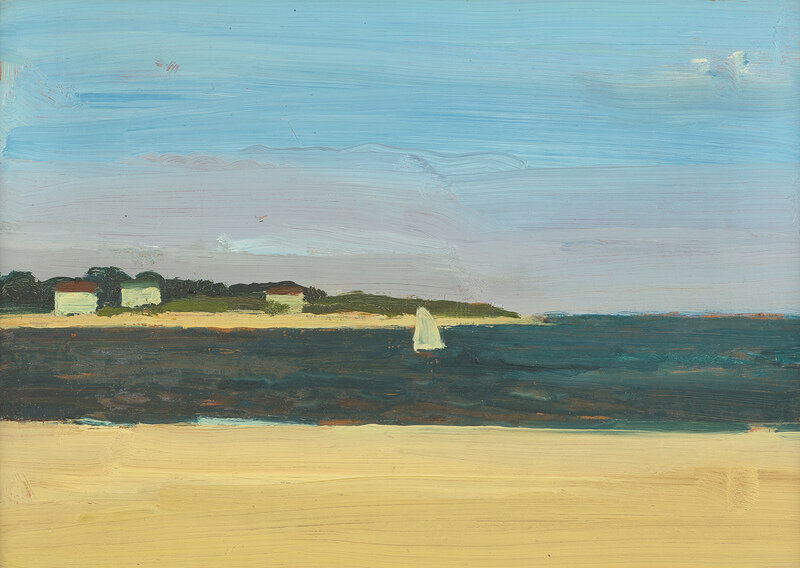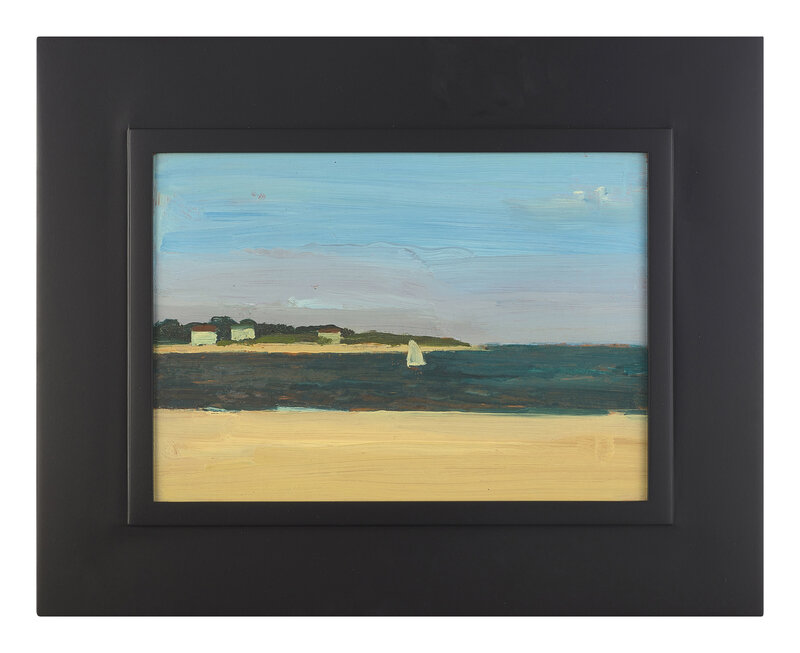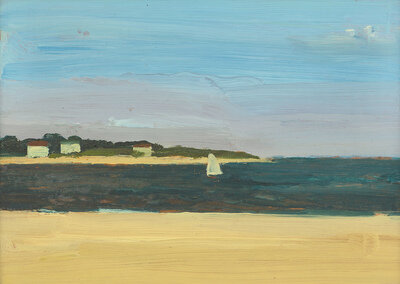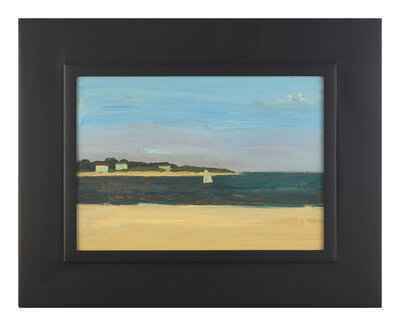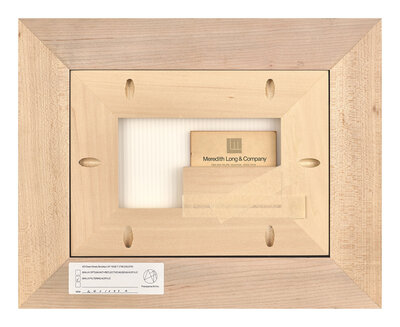Condition Report
Contact Information
Auction Specialist
Lot 3
Albert York
(American, 1928-2009)
Untitled, 1982
Sale 2104 - Post War and Contemporary Art
Nov 14, 2024
10:00AM ET
Live / New York
Own a similar item?
Estimate
$60,000 -
80,000
Price Realized
$76,200
Sold prices are inclusive of Buyer’s Premium
Lot Description
Albert York
(American, 1928-2009)
Untitled, 1982
oil on panel
7 7/8 x 10 7/8 inches.
Provenance:
Meredith Long & Company, Houston, Texas
Acquired from the above by the present owner in 1982
Lot essay:
Albert York’s (1928-2009) oil paintings are simple and compelling, reflecting an introspective awareness of art history while also projecting a sense of modern unease. As seen here in this work from 1982, his carefully balanced landscapes follow the pastoral tradition established in the seventeenth century by Claude Lorrain while also evoking more contemporary influences, including the leisurely idylls of Impressionists, such as Claude Monet and Edgar Degas, as well as the profound solitariness of an Edward Hopper.
In a rare interview in 1995 in a New Yorker magazine profile, art critic Calvin Tomkins said York was perhaps "the most highly admired unknown artist in America." The artist was described as a shy man who shunned the art world and the spotlight. He worked painstakingly slowly and was perpetually unhappy with his work, often scraping down his wood panels and starting over. The results were that, at rarely more than 12 inches on a side (and, indeed, this example slightly less), his works evoke a contained world in which time and art seem to stand still or else even move backward through history. They purposefully seek to reject interpretations of narrative and ignore the more widespread trend towards abstraction popular throughout the twentieth century.
Born in Detroit in 1928, York was raised by his father who worked a demanding role in the automobile industry, where he was often away from home. As such, the artist lived mostly in boarding schools and foster homes and, in his teens he lived with an aunt and uncle in Belleville, Ontario, when he was also able to study at the Ontario College of Art. Thereafter, he studied at the Society of Arts and Crafts in Detroit. His artistic ventures were paused during the Korean War, in which he saw active duty in the Army before, once discharged, moving to New York in 1952. There, York briefly enrolled at the Art Students’ League, but he could not afford the fees, and instead took part in Raphael Soyer’s evening classes on West 56th Street. Soyer’s admiration for Degas and the French School was to later influence York in style and subject matter.
For a time, York stopped painting so he could focus on supporting himself with odd jobs. In 1957, he found full-time work as a gilder with the frame maker Robert Kulicke. He began to paint again in earnest in 1960, after taking a four-month trip to France with Virginia Mann Caldwell, his future wife, and her two children. Inspired by the French countryside, York took elements of the landscape and rearranged them as he worked, creating small, concentrated pictures in halftones of green and blue. In 1962, he reluctantly showed his paintings to Kulicke, who enthusiastically recommended them to Roy Davis, an art school friend and business partner. Davis proved incredibly important to York, working to advance his standing within the New York art scene, from York’s first exhibition at the Davis Galleries in 1963 to his last (at Davis & Langdale) in 2007, for a total of 16 exhibitions throughout his mature career. That same year in 1963, York and his family moved to Long Island, where the artist was to live and work for the remainder of his life. After the move, he would send new paintings to Davis Galleries in brown parcels via regular post, promising that next time he would “do better,” revealing his brutal artistic standards.
Despite the numerous art historical references, York’s paintings exude a quiet modernity, with their geometric simplicity, flatness of form, and economical brushwork. Likewise, his palette of greens and blues tinged with gray creates a sense of muted stillness and isolation in his work. Although his subject matter is realistic and inspired by his rural Long Island surroundings, there is a tension between what is real and what is imaginary. The art critic Bill Berkson poetically described this seemingly painted agitation:
There’s something inclement beneath all that idyllic sunlight, a bruxism out of key with the blithely tumbled midday glow, and an elegiac mood that turns the convex pressure of accumulated dabs and dry swishes of paint teetering reflectively back on itself. The light could falter, the whole scene evanesce or fall apart as you look on. (“The Idylls of Albert York, Art in America, September 1988, p. 174)
An exacting perfectionist, the artist is said to have only created 200 to 250 paintings during his lifetime, partly due to his slow rate of production. He stopped sending works to his gallery in 1992. This may have been a result of his reaction to a three-person exhibition, Painting Horizons: Jane Freilicher, Albert York, April Gornik, at the Parrish Art Museum, Southampton, New York, in 1989. In his 1995 interview, the artist told Calvin Tomkins that after seeing his artwork at the Parrish, he was "pretty upset about what I'd been doing for these last years."(“Artist Unknown,” The New Yorker, June 19, 1995, p. 81)
Untitled (1982) shows the skill in the artist’s depictions of seemingly simple, familiar subjects that also speak of intense psychological mysteries. His spare, efficient brushstrokes reveal a unique willingness to look deeply and profoundly, and to set aside conventional notions of how space is supposed to exist in the world.
